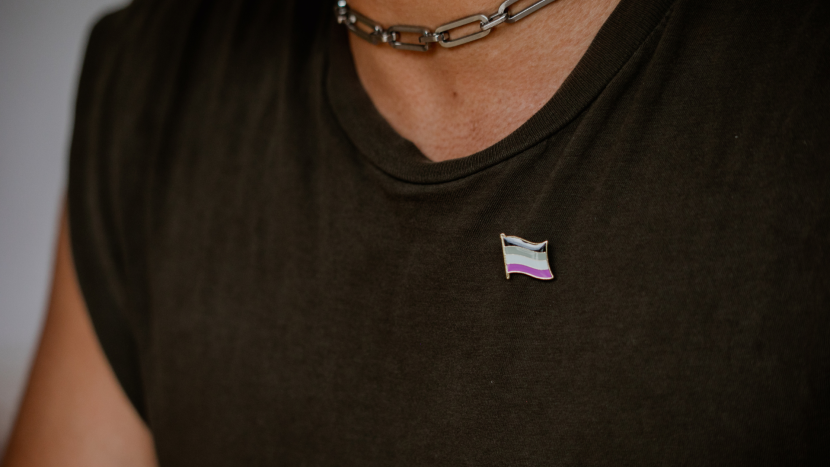In recent years, conversations around sexual orientation have become more inclusive and diverse. One orientation that’s often misunderstood or overlooked is asexuality. Whether you’re questioning your own identity, supporting someone else, or simply curious, this guide will help you understand what asexuality is—and what it isn’t.
What Does Asexuality Mean?
Asexuality is a sexual orientation where a person experiences little to no sexual attraction to others. This doesn’t mean they are incapable of love, relationships, or emotional intimacy—it simply means that sexual attraction is not part of their experience.
Just as heterosexual, homosexual, or bisexual people can vary greatly in their preferences, so can asexual people. Asexuality is a spectrum, and individuals may identify anywhere along that range.
Common Terms and Variations
To better understand asexuality, here are some key terms:
- Asexual (Ace): Someone who experiences little or no sexual attraction.
- Graysexual: Someone who experiences sexual attraction rarely or only under specific circumstances.
- Demisexual: Someone who experiences sexual attraction only after forming a deep emotional connection.
- Aromantic: Someone who experiences little or no romantic attraction (can be separate from asexuality).
Many asexual individuals also identify with a romantic orientation, such as:
- Aromantic (no romantic attraction)
- Homoromantic, Heteroromantic, Biromantic, etc.
For example, someone might be asexual but heteroromantic, meaning they don’t feel sexual attraction but can fall in love with someone of the opposite gender.
What Asexuality Is Not
Despite growing awareness of diverse sexual orientations, asexuality is still one of the most misunderstood. While more people are recognizing asexuality as a valid identity, myths and misconceptions continue to cloud the conversation.
So, let’s take a moment to clear the air. Here’s what asexuality is not:
1. Asexuality Is Not Celibacy or Abstinence
One of the most common confusions is between asexuality and celibacy. But the difference is simple:
- Celibacy is a choice—a decision to refrain from sexual activity, often for religious, cultural, or personal reasons.
- Asexuality is an orientation—a person naturally does not experience sexual attraction.
An asexual person may or may not have sex; the key distinction is that they do not feel sexual attraction, not that they’re choosing to avoid sex.
2. Asexuality Is Not the Same as Being Aromantic
Sexual and romantic orientations are not the same. Asexual people may still want romantic relationships. Many asexual individuals are:
- Heteroromantic (romantically attracted to the opposite gender)
- Homoromantic, biromantic, panromantic, or aromantic (no romantic attraction)
This means an asexual person can fall in love, date, and form deep emotional bonds, even if they don’t feel sexual attraction.
3. Asexuality Is Not Caused by Trauma or “Hormonal Issues”
One of the most harmful misconceptions about asexuality is that it’s the result of something going wrong—like past trauma, sexual abuse, or hormonal imbalances. Let’s be clear:
- Asexuality is not caused by trauma or abuse.
While some people who have experienced trauma or sexual abuse may also identify as asexual, correlation does not imply causation. Many asexual people have never experienced any form of trauma or abuse. Likewise, not everyone who has gone through such experiences becomes asexual. The two are not inherently connected. - Asexuality is not a symptom to be “fixed”.
It’s not the result of a medical condition, low libido, or hormone deficiency. While issues like depression, medication side effects, or hormonal imbalances can impact sexual desire, asexuality is about the lack of sexual attraction, not about temporary changes in libido. - Asexuality is a valid sexual orientation, not a problem or diagnosis.
Reducing a person’s identity to a presumed trauma or medical issue is both incorrect and dismissive. It invalidates the real, lived experiences of asexual individuals and perpetuates stigma.
4. Asexuality Is Not a Phase
Just like being gay, straight, or bisexual, asexuality is a legitimate orientation. Some people may question or explore their identity over time—and that’s okay—but for many, being asexual is a stable and lifelong part of who they are.
Dismissing it as a “phase” is invalidating and hurtful.
5. Asexual People Are Not “Just Shy” or “Late Bloomers”
Asexuality is not about being inexperienced, awkward, or “not having met the right person.” Asexual people can date, fall in love, and have deep emotional connections—they just don’t feel sexual attraction, and that’s not something waiting to be “unlocked.”
6. Asexual People Are Not Anti-Sex
Being asexual doesn’t mean someone is disgusted by or morally opposed to sex. Asexual people can:
- Have sex
- Enjoy sex
- Be indifferent to sex
- Feel repulsed by sex
It varies by individual. The core issue is lack of sexual attraction, not a universal attitude about sexual activity.
Relationships and Asexuality
Asexual people can and do form meaningful, loving relationships, whether romantic, platonic, or queerplatonic. While asexuality means not experiencing sexual attraction, many asexual individuals still feel romantic attraction and may desire committed partnerships. Others may identify as aromantic and still seek deep emotional bonds. Some asexual people may choose to have sex for personal or relational reasons, while others are sex-repulsed or disinterested. Asexual–allosexual relationships can thrive with clear communication and mutual respect. Ultimately, asexual individuals are just as capable of love, connection, and commitment as anyone else—their relationships may simply look different from conventional expectations.
Why Visibility Matters
Asexuality visibility helps combat misconceptions, validates asexual identities, and fosters inclusivity. When asexual people are seen and heard, it reduces stigma, builds community, and helps others feel less alone. Visibility challenges the assumption that everyone experiences sexual attraction and promotes understanding of diverse ways to connect. Ultimately, it empowers asexual individuals to live openly and encourages a more empathetic, inclusive society.
How to Be Supportive
Being supportive of asexual people starts with listening without judgment and respecting their identity as valid. Use inclusive language, avoid assumptions about attraction or relationships, and don’t pressure anyone to conform to societal norms about sex or romance. Educate yourself about asexuality to avoid spreading myths, and stand up against acephobia when you see it. Most importantly, treat asexual people with the same kindness, dignity, and acceptance you’d offer anyone else.
Final Thoughts
Asexuality is a valid and diverse sexual orientation that challenges traditional ideas about attraction and relationships. By learning more, listening with empathy, and embracing the spectrum of human experiences, we create a world where everyone feels seen, respected, and understood. Whether you identify as asexual or are simply here to learn, fostering awareness and acceptance helps make society safer and more inclusive for all. Everyone deserves the freedom to be themselves—without shame, pressure, or explanation.




